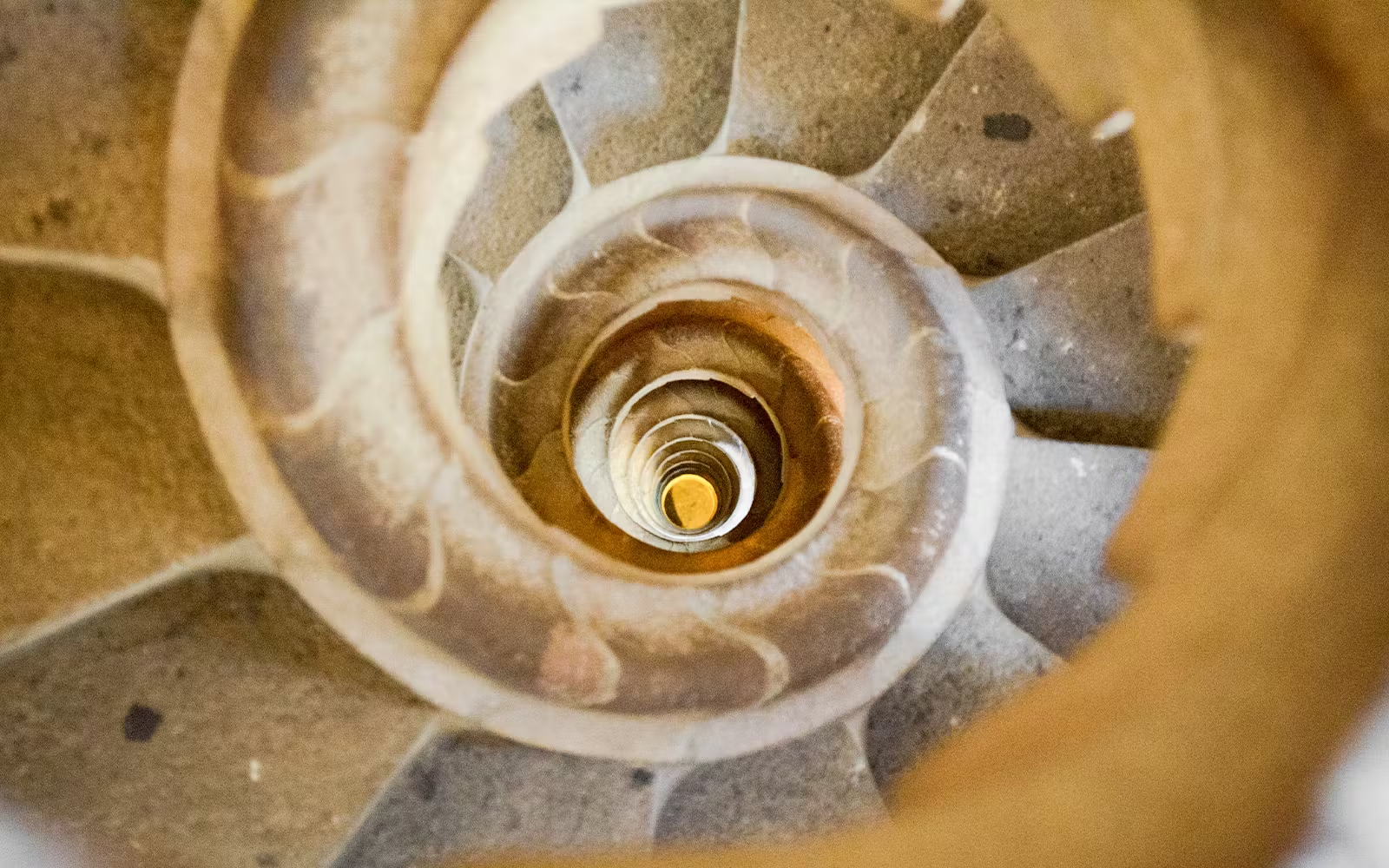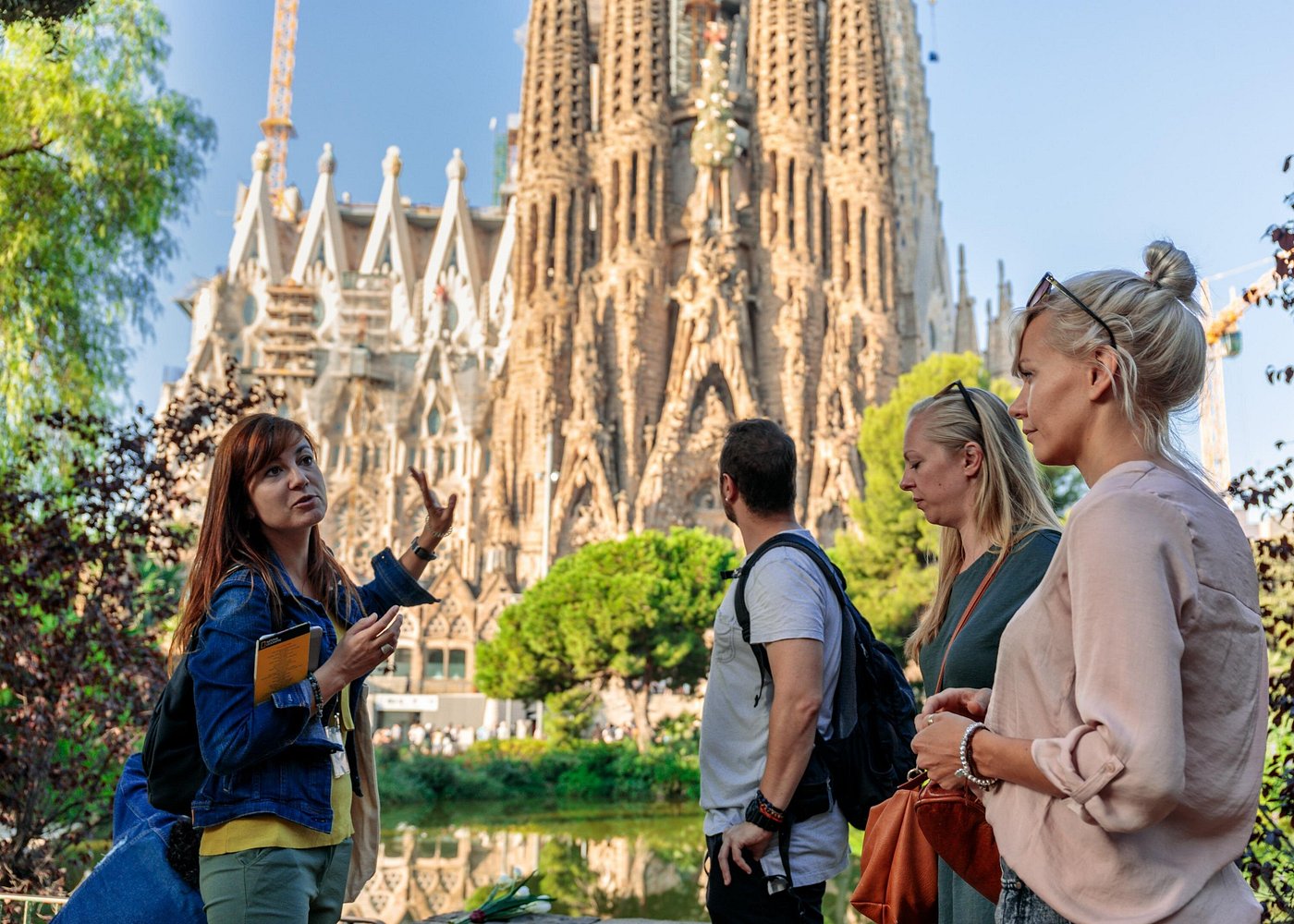






6,000+ reviews
Best price:
€47






6,000+ reviews
Best price:
€49






2,500+ reviews
Best price:
€72






9,800+ reviews
Best price:
€99






1,000+ reviews
Best price:
€143






7+ reviews
Best price:
€259

Sagrada Familia opening hours are split in three different periods.
Nov - Feb: Mon-Sat 9AM - 6PM Sun 10.30AM - 6PM
Apr - Sept: Mon-Fri 9AM - 7PM Sat 9AM - 6PM Sun 10.30AM - 7PM
Mar and Oct: Mon-Fri 9AM - 8PM Sat 9AM - 6PM Sun 10.30AM - 8PM
A thorough visit will last about 2 hours.

The Sagrada Familia is located in Eixample, 08013 Barcelona, Spain.
Both entrances are in c/ de la Marina, the general one in front of the Nativity façade, whereas the one for groups and people with disabilities is a few meters south.

Food is not allowed on the premises of the Sagrada Familia, and drinking is allowed but only outside the building.
At the Sagrada Familia you will find bathrooms and a bookshop available to visitors. There are no lockers available, so make sure to not bring any forbidden items. Wheelchairs are available upon request.

The Sagrada Familia is near the center of Barcelona, with many attractions at walking distance, like La Pedrera and Placa de Catalunya. If you're interested in a comprehensive list, check out our article about things to do in Barcelona!
If you want to explore more of Guadì's creations, consider visiting Casa Batllò or Casa Vicens.
If you're interested in exploring the old town of Barcelona instead, a Gothic Quarter tour is what you're looking for!
You love art? You will find plenty of interesting museums in Barcelona, ranging from Dalì and Picasso to the Museu Nacional d'Art de Catalunya, so visit away!
Prices for guided tours usually range from €40 to €70 per person. Costs can vary based on the type of tour, language, and whether extra features, like tower access, are included.
A guided tour includes the main basilica, museum, and Gaudí’s workshop. Visitors will see stained-glass windows, sculptures, and learn about the building’s history. Some tours may include special access areas.
Tickets can be bought online from the official Sagrada Familia website. Visitors should book early, as tours often sell out, especially during busy seasons. Tickets are only valid for the selected date and time.
Not all guided tours include tower access. Visitors need to choose a tour that specifically lists tower admission. Tower tickets are usually more expensive and sell out quickly.
Visitors should wear modest clothing covering shoulders and knees. Comfortable shoes are recommended, as tours involve walking and standing for long periods. Hats may be required to be removed inside church areas.

The Sagrada Família features three grand facades: the Nativity, Passion, and Glory facades. Each facade is meticulously detailed with biblical scenes. The Nativity facade, representing the birth of Jesus, is vibrant and ornate. In contrast, the Passion facade depicts the suffering and crucifixion of Christ with a stark and somber style.
The Glory facade, which remains under construction, aims to illustrate the journey to God and eternal salvation. These facades are not just decorative but also imbued with rich Christian symbolism, providing you with a profound narrative journey through the life of Jesus Christ.

The interior of the Sagrada Família is designed to resemble a vast forest, with columns branching out like trees. Antoni Gaudí intended for the space to evoke a serene, natural environment. Sunlight filters through stained glass windows, creating a dynamic display of colors that change throughout the day.
Gaudí’s use of hyperboloids and parabolas in the design enhances acoustic qualities, ensuring that hymns resonate beautifully. The detailed altar and intricate ceiling contribute to a space that is both reflective and awe-inspiring, immersing you in a spiritual ambiance as soon as you step inside.

The Sagrada Família includes 18 spires, each with a unique religious significance. The tallest central spire, which will reach 172.5 meters upon completion, is dedicated to Jesus Christ. The Virgin Mary and the four Evangelists will have their own spires surrounding the central one.
In addition to these, twelve spires represent the Apostles. The height and design of these towers are intended to guide your eyes skyward, symbolizing your connection to the divine. The intricate details and careful planning of the spires highlight Gaudí’s dedication to integrating faith and architecture seamlessly.

Antoni Gaudí’s work on the Sagrada Familia has left an indelible mark on modern architecture. His use of organic shapes, innovative structural techniques, and elaborate facades has pushed the boundaries of architectural design.
The attention to natural forms and the incorporation of light and color have inspired countless architects worldwide. Gaudí's approach to blending functional elements with aesthetic beauty set a new precedent in architecture. The basilica’s unique structure has become a case study in the architectural community for its bold innovations.

The construction of the Sagrada Família has faced numerous challenges, including political turmoil, funding issues, and technical difficulties. The Spanish Civil War in the 1930s saw Gaudí's original plans and models largely destroyed, necessitating reconstruction based on surviving documents and interpretations by subsequent architects.
Despite these challenges, progress has been steady. Advances in construction technology and materials have facilitated faster building methods. Public and private funding, along with the support from tourists and patrons, continues to drive the ongoing efforts to complete this architectural marvel.